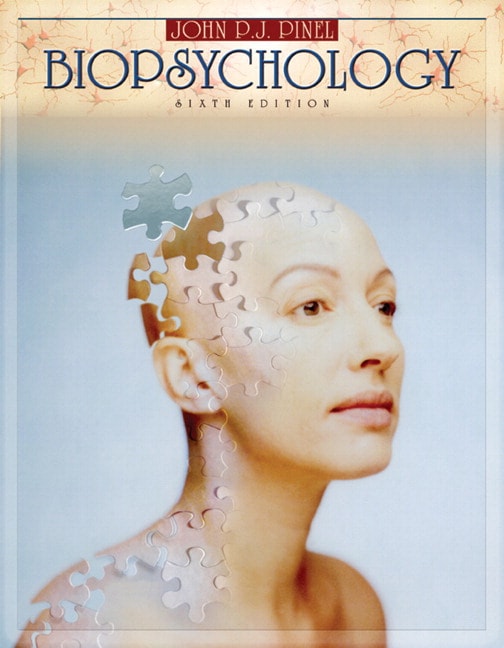
30.00$ - DOWNLOAD
- Digital File Direct & Fast Download ( Bank Exam ZIP & PDF) only for 30.00$
- All chapters are included in the test Bank Exam
- Free samples included once needed (ZIP & PDF)
- Multiple payment options (Paypal , Credit Card) - NO account Required
- Dedicated support / instant chat – Email - Whatsapp
- Digital file of Biopsychology with Beyond the Brain and Behavior CD-ROM and with MyPsychKit, 6th Edition for sale
Category : Higher Education
***THIS IS NOT THE ACTUAL BOOK. YOU ARE BUYING the Test Bank in e-version of the following book***
1. Biopsychology As a Neuroscience: What Is Biopsychology, Anyway? What Is Biopsychology? What Is the Relation Between Biopsychology and the Other Disciplines of Neuroscience? What Types of Research Characterize the Biopsychological Approach? What Are the Divisions of Biopsychology? Converging Operations: How Do Biopsychologists Work Together? Scientific Interference: How Do Biopsychologists Study the Unobservable Workings of the Brain? Critical Thinking About Biopsychological Claims. 2. Evolution, Genetics, and Experience: Thinking About the Biology of Behavior. Thinking About the Biology of Behavior: From Dichotomies to Relations and Interactions. Human Evolution. Fundamental Genetics. Behavioral Development: The Interaction of Genetic Factors and Experience. The Genetics of Human Psychological Differences. 3. The Anatomy of the Nervous System: The Systems, Structures, and Cells That Make Up Your Nervous System. General Layout of the Nervous System. Cells of the Nervous System. Neuroanatomical Techniques and Directions. Spinal Cord. The Five Major Divisions of the Brain. Major Structures of the Brain. 4. Neural Conduction and Synaptic Transmission: How Neurons Send and Receive Signals. The Neurons Resting Membrane Potential. Generation and Conduction of Postsynaptic Potentials. Integration of Postsynaptic Potentials and Generation of Action Potentials. Conduction of Action Potentials. Synaptic Transmission: Chemical Transmission of Signals from One Neuron to Another. The Neurotransmitters. Pharmacology of Synaptic Transmission. 5. The Research Methods of Biopsychology: Understanding What Biopsychologists Do. Methods of Visualizing and Stimulating the Living Human Brain. Recording Human Psychophysiological Activity. Invasive Physiological Research Methods. Pharmacological Research Methods. Genetic Engineering. Neuropsychological Testing. Behavioral Methods of Cognitive Neuroscience. Biopsychological Paradigms of Animal Behavior. 6. The Visual System: From Your Eyes to Your Cortex. Light Enters the Eye and Reaches the Retina. The Retina and Translation of Light into Neural Signals. From Retina to Primary Visual Cortex. Seeing Edges. Seeing Color. 7. Mechanisms of Perception, Conscious Awareness, and Attention: How You Know the World. Principles of Sensory System Organization. Cortical Mechanisms of Vision. Audition. Somatosensation: Touch and Pain. The Chemical Senses: Smell and Taste. Selective Attention. 8. The Sensorimotor System: How You Do What You Do. Three Principles of Sensorimotor Function. Sensorimotor Association Cortex. Secondary Motor Cortex. Primary Motor Cortex. Cerebellum and Basal Ganglia. Descending Motor Pathways. Sensorimotor Spinal Circuits. Central Sensorimotor Programs. 9. Development of the Nervous System: From Fertilized Egg to You. Phases of Neural Development. Postnatal Cerebral Development in Human Infants. Effects of Experience on Early Development, Maintenance, and Reorganization of Neural Circuits. Neuroplasticity in Adults. Disorders of Neurodevelopment: Autism and Williams Syndrome. 10. Brain Damage and Neuroplasticity: Can the Brain Recover from Damage? Causes of Brain Damage. Neuropsychological Diseases. Animal Models of Human Neuropsychological Diseases. Neuroplastic Responses to Nervous System Damage: Degeneration, Regeneration, Reorganization and Recovery. Neuroplasticity and the Treatment of Nervous System Damage. 11. Learning, Memory, and Amnesia: How Your Brain Stores Information. Amnesic Effects of Bilateral Medial Temporal Lobectomy. Amnesia of Korsakoff's Syndrome. Amnesia of Alzheimer's Disease. Amnesia After Concussion: Evidence for Consolidation. Neuroanatomy of Object-Recognition Memory. Hippocampus and Memory for Spatial Location. Where Are Memories Stored? Synaptic Mechanisms of Learning and Memory. Conclusion: Infantile Amnesia and the Man Who Remembered H.M. 12. Hunger, Eating, and Health: Why Do Many People Eat Too Much? Digestion and Energy Flow. Theories of Hunger and Eating: Set Points Versus Positive Incentives. Factors That Determine What, When, and How Much We Eat. Physiological Research on Hunger and Satiety. Body Weight Regulation: Set Points Versus Settling Points. Human Obesity. Anorexia Nervosa. 13. Hormones and Sex: Whats Wrong with the Mamawawa? The Neuroendocrine System. Hormones and Sexual Development. Three Cases of Exceptional Human Sexual Development. Effects of Gonadal Hormones on Adults. The Hypothalamus and Sexual Behavior. Sexual Orientation, Hormones, and the Brain. 14. Sleep, Dreaming, and Circadian Rhythms: How Much Do You Need to Sleep? The Physiological and Behavioral Events of Sleep. REM Sleep and Dreaming. Why Do We Sleep, and Why Do We Sleep When We Do? Comparative Analysis of Sleep. Circadian Sleep Cycles. Effects of Sleep Deprivation. Neural Mechanisms of Sleep. The Circadian Clock: Neural and Molecular Mechanisms. Drugs That Affect Sleep. Sleep Disorders. The Effects of Long-Term Sleep Reduction. 15. Drug Addiction and the Brains Reward Circuits: Chemicals That Harm with Pleasure. Basic Principles of Drug Action. Role of Learning in Drug Tolerance and Drug Withdrawal Effects. Five Commonly Abused Drugs. Biopsychological Theories of Addiction. Intracranial Self-Stimulation and the Pleasure Centers of the Brain. Neural Mechanism of Motivation and Addiction. A Noteworthy Case of Addiction. 16. Lateralization, Language, and the Split Brain: The Left Brain and Right Brain of Language. Cerebral Lateralization of Function: Introduction. The Split Brain. Differences Between the Left and Right Hemispheres. Cortical Localization of Language: The Wernicke-Geschwind Model. Evaluation of the Wernicke-Geschwind Model. The Modern Cognitive Neuroscience Approach to Language. Cognitive Neuroscience of Dyslexia. 17. Biopsychology of Emotion, Stress, and Health: Fear, the Dark Side of Emotion. Biopsychology of Emotion: Introduction. Fear, Defense, and Aggression. Stress and Health. Fear Conditioning. Brain Mechanisms of Human Emotion. 18. Biopsychology of Psychiatric Disorders: The Brain Unhinged. Schizophrenia. Affective Disorders: Depression and Mania. Anxiety Disorders. Tourette Syndrome. Clinical Trials: Development of New Psychotherapeutic Drugs. Table of Contents
Manual solution Biopsychology with Beyond the Brain and Behavior CD-ROM and with MyPsychKit, 6th Edition for sale , Biopsychology with Beyond the Brain and Behavior CD-ROM and with MyPsychKit, 6th Edition for sale , Biopsychology with Beyond the Brain and Behavior CD-ROM and with MyPsychKit, 6th Edition pdf for sale , John P.J. Pinel, University of British Columbia


0 commentaires:
Enregistrer un commentaire